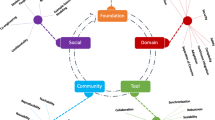Abstract
Euclid RTP 11.13 was a major initiative to promote the use of synthetic environments (SEs) in Europe. One of the main results from the programme was the concept of the SE development environment (SEDE) for creating and utilising SEs, which is analogous to an integrated development environment for developing software applications. The purpose of the SEDE is to provide a facility that will assist the different types of SE users i.e. Problem Setters, Problem Solvers, and SE Implementers, so that SEs can be delivered faster, better and cheaper. The SEDE comprises of five main components: the SE Development and Exploitation process (SEDEP), repository, SE management tool (SEMT), SE tools (both COTS and those being developed in Euclid 11.13) and a Knowledge Base. The SEDEP was developed from FEDEP version 1.5 and its purpose is to provide additional information to the SE community not covered by the terms of reference of the FEDEP. In particular, it is a generic process that is not dedicated to one kind of interoperability technology and covers the complete SE lifecycle, from eliciting the user needs through to evaluating the results from operating the SE. In order to capture the work done in RTP 11.13, the FEDEP and SEDEP development teams worked together to pull-through applicable information into the IEEE 1516.3 version of the FEDEP. Following the conclusion of RTP 11.13, further development of the SEDEP has stopped whilst a new ‘owner’ is found for it. However, the SEDEP version 2.0 is still publicly available (http://www.euclid1113.com) and SE developers are encouraged to use it since it complements the information provided by the FEDEP.





Similar content being viewed by others
References
Ford KJ (2001) Euclid RTP11.13 realising the potential of networked simulation in Europe European SIW, June 01, Paper 01E-SIW-011
Ford KJ (2002) The Euclid RTP11.13 SE development environment, Euro SIW June 02, Paper 02E-SIW-007
Ford KJ (2003) Marko Jokipii, The Euclid 11.13 SE management tool, Euro SIW June 03, Paper No. 03E-SIW-093
Marco Fabbri, Rui Nunes, Roger Davies, Erik De Koster (2003) The repository in support of the synthetic environment development & exploitation process (SEDEP), ITEC 2003
Ford KJ (2003) The Euclid RTP11.13 Tool Suite, ITEC Paper No. 49, April 2003
Ford KJ (2001) Pascal Peyronnet, the Euclid RTP 11.13 synthetic environment development & exploitation process, Fall SIW, September 01, Paper 01F-SIW-124.
High Level Architecture (1999) Federation Development and Execution Process (FEDEP) Model, version 1.5, December 8 1999
IEEE Standard 1516.3 (2003) IEEE recommended practice for high level architecture (HLA) Federation Development & Execution Process (FEDEP), 23 April 2003
Goran Ancker (2004) The Euclid RTP 11.13 SE Development & Exploitation Process (SEDEP): Practical Experience from Nordic Fox Use Case, Spring SIW 2004, Paper No. 04S-SIW-066
Acknowledgements
The author would like to acknowledge the help of all his colleagues in the Euclid consortium with the development of the SEDEP, particularly Pascal Peyronnet (Thales Training and Simulation), who was the inspiration for the initial work.
Author information
Authors and Affiliations
Corresponding author
Rights and permissions
About this article
Cite this article
Ford, K. The Euclid RTP 11.13 Synthetic Environment Development and Exploitation Process (SEDEP). Virtual Reality 8, 168–176 (2005). https://doi.org/10.1007/s10055-004-0146-9
Published:
Issue Date:
DOI: https://doi.org/10.1007/s10055-004-0146-9




